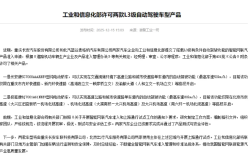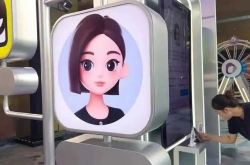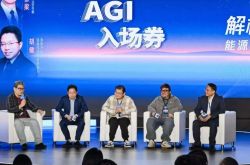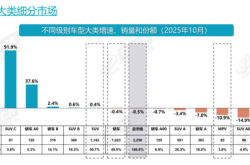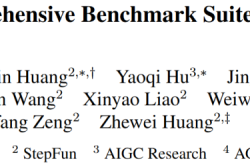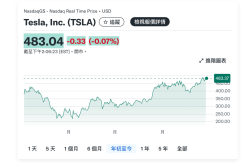AI Advertising Revolution: The Transformation and Rebuilding of the $470 Billion Profit Pool
![]() 08/26 2025
08/26 2025
![]() 651
651
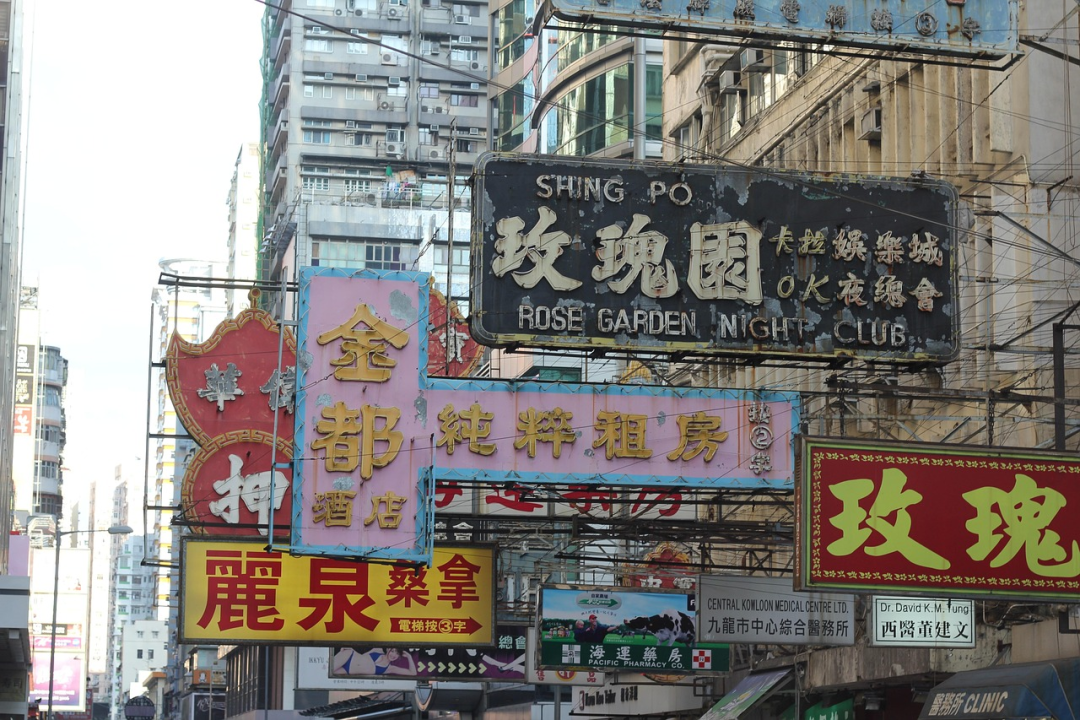
Author | Chen Wen
Source | Dongjian New Research Institute
At the ChinaJoy exhibition, Mobikok's trial advertising alliance system dynamically generates personalized game trial clips, with the click behavior of 50 million global users continuously refining the AI model, resulting in an industry-leading conversion rate of 28%.
This is merely a glimpse of AI's reshaping of the advertising industry.
In the first half of 2025, Tencent's R&D investment soared to RMB 39.1 billion, with AI advertising technology emerging as a key area of breakthrough. Goldman Sachs Research lists digital advertising as the most mature AI application track after cloud computing, forecasting that AI will drastically disrupt the global advertising profit pool of approximately $470 billion in the coming years.
In the Chinese market, CTR (China Central Television Market Research) research reveals that 53.1% of advertisers have utilized AIGC technology in creative content generation, significantly surpassing its use in data analysis, customer service, and other aspects. Notably, nearly 20% of advertisers rely on AI to complete more than 50% of the video creation process.
This technological revolution is redefining every facet of the advertising industry, from delivery strategies to creative generation, and from effectiveness measurement to user experience.
01 Application Divisions: The Two Major Battlegrounds of AI Advertising
Overall, the field of AI advertising has bifurcated into two distinct yet interconnected application directions: AI advertising marketing focused on precise delivery and AI advertising production centered on content generation.
In the marketing arena, giants have constructed intricate intelligent delivery systems.
Goldman Sachs Research reports highlight Google's Performance Max (PMax) and Meta's Advantage+ as the "most successful comprehensive AI advertising products currently available." The common denominator is that advertisers simply need to provide marketing goals, budgets, material creatives, and audience leads, and the system utilizes AI to autonomously handle cross-channel delivery decisions and optimizations, achieving "one-click" advertising delivery.
Similar to the aforementioned products, ByteDance's UBMax, powered by JuLiang Engine, is known as the "ByteDance version of PMax." UBMax encompasses virtually all of ByteDance's advertising resources (TikTok, Toutiao, Xigua Video, etc.), enabling fully automated delivery. Advertisers only need to specify budgets, delivery goals, audience signals, and creative materials, and the system will automatically devise strategies, allocate resources, and optimize based on these objectives. In March of this year, ByteDance transitioned almost all manual delivery methods to UBMax, underscoring its emphasis and confidence in the AI delivery model.
Tencent is also accelerating its AI transformation in advertising delivery, with its proposed "Tencent Advertising 3.0 System" essentially being a highly automated, intelligent decision-making delivery platform.
This system eliminates the need for manually setting bids and defining target audiences, with AI automatically processing based on the business information and goals submitted by advertisers. When promoting within the WeChat ecosystem or Tencent Alliance ads, advertisers can opt for the intelligent delivery mode: simply input product selling points, target audience descriptions, conversion goals (such as form collection, order placement), and budget, and the system will intelligently match suitable ad placements (Moments, official account articles, QQ Space, etc.) and audiences.
Alimama employs the "Wanxiang Platform Unbounded Version" to address the question of "where and to whom to deliver materials once businesses have them," intelligently delivering various types of images, texts, and video creatives generated by AI across all Taobao channels with a single click.
Moreover, niche challengers have emerged, such as AppLovin's Axon 2.0 focusing on mobile app advertising, Pinterest's Performance+ specializing in visual search advertising, and Mobikok's programmatic advertising platform targeting CTV and e-commerce CPS scenarios, all of which hold significant market shares in their respective fields.
On the production front, generative AI is likewise altering the creative production paradigm.
TikTok launched the "Jichuang AI" platform, integrating generative AI technology to provide a one-stop tool spanning script/copywriting generation, image creation, to video production.
Tencent's "Miaosi" platform supports batch generation of images and videos, reducing creative production costs by over 50% and tripling A/B testing efficiency.
Alimama introduced the "Wanxiang Lab" generative AI product, leveraging nearly 100 digital human models in its material library to enable try-on displays in diverse scenarios, generating high-quality videos in 30 seconds and significantly lowering material production costs.
37 Interactive Entertainment's self-developed industry large model "Xiaoqi" can produce images, videos, and 3D materials that meet product requirements. In 2024, AI was deeply involved in the generation of over 70% of the video materials for its game advertising.
In addition to these giants and professionals, several robust advertising companies, downstream agency producers, and AI studios have also joined the ranks of AI advertising production.
WPP Group has collaborated with major Silicon Valley companies, partnering with Microsoft to enhance video production effects using tools like Azure AI Vision and teaming up with Google to optimize AI video narration generation and other functions by integrating the Gemini model with its self-developed "WPP Open" system.
Publicis utilizes AI combined with eye-tracking technology to optimize video content production, generating a dozen video materials suitable for different platforms daily. Clients such as GlaxoSmithKline have already started leveraging these services.
Huayang Lianzhong launched the video processing tool "Lingjian" last year, capable of intelligently generating mixed-cut video content.
Startup teams have taken a meticulous approach and garnered favor from leading brands.
For instance, the Zhizhu AI team, which created "the country's first commercial AI video for the automotive industry" for FAW Toyota, the Xixifus creative team, which produced AI short films for the Kuaishou Image Festival, the breathe studio, which collaborated with Anta, and the Yishu Culture studio, which worked with Suntory, Dong'e Ejiao, and other brands, have all captured market attention through their works and forged collaborations.
02 Marketing Revolution: The Three Major Transitions of AI Advertising
According to Aurora Mobile and Yuehu's calculations, the AI marketing industry is expected to reach RMB 66.9 billion in 2025. AI advertising marketing is evolving from tool application to ecological collaboration. Combining technology, data, and enterprise development dimensions, the "AI Advertising Maturity Model" clearly delineates the transition path through three stages.
Stage 1: Tool-based Application. Enterprises view AI as a tool for efficiency enhancement, such as intelligent customer service systems replacing manual inquiries. Tencent's "Miaowen" tool has replaced over 60% of basic inquiries, boosting lead conversion rates by 25%.
Stage 2: Systematic Integration. A representative case is Google Performance Max, which integrates search, display, video, and other omni-channel resources, achieving a 10% increase in sales. Meta's Advantage+ automatically optimizes ad placements, directing 60-80% of the budget to high-conversion platforms.
Stage 3: Ecological Collaboration. AI becomes the infrastructure of digital marketing, exemplified by Mobikok's "brand-effect-sales integration" ecosystem, which facilitates a 2.3-fold annual GMV increase for a cross-border e-commerce company through the programmatic advertising platform, Buzzify monetization platform, and trial advertising alliance's three major business matrices.
 Three-stage Model of AI Advertising Marketing Development Chart: Dongjian New Research Institute
Three-stage Model of AI Advertising Marketing Development Chart: Dongjian New Research Institute
Currently, China is transitioning from stage 1 to stage 2. Leading domestic media platforms like Tencent and TikTok have successively integrated AI technology systematically, embedding AI into every marketing link from creativity to final conversion, achieving a comprehensive upgrade. However, during this process, the industry as a whole still encounters three obstacles.
First, data silos hinder system effectiveness.
As mentioned earlier, Meta's Advantage+ can achieve "one-click" advertising delivery, but the product's algorithm heavily relies on users' historical data. Cases have shown that the conversion rate of new users utilizing the Advantage+ audience function may decline by 50%. In other words, Advantage+ needs to be used on the Meta platform for a period before its full potential can be gradually unleashed. Due to data barriers between platforms, some AI advertising marketing tools struggle to achieve genuine collaboration during cross-channel delivery.
Second, the algorithm's black box precipitates a crisis of trust.
Taking the currently popular GEO (Generative Engine Optimization) service as an example, due to the "black box" nature of AI, GEO service providers cannot clearly elucidate the model's preference logic. When advertisers inquire about why the competition ranks higher, the technical team cannot provide a definitive answer, leading to a lack of quantifiable data indicators when presenting final results.
Media investigations have revealed that although some GEO service providers promise 100% AI recommendation, more providers offer "refund if ineffective" and "measurable results" guarantees, with ambiguous boundaries and difficult-to-assess effects, making it challenging to trust GEO.
Third, service chaos disrupts market order.
Similarly, the lack of quantifiable standards for delivery effectiveness in GEO services allows some service providers to exploit the situation, aiming to maximize profits per deal. Some high-end customized solutions quote prices as low as RMB 30,000 per quarter and as high as an exaggerated RMB 1.5 million per quarter, while the unit price for basic keyword bidding services ranges from RMB 800 to RMB 3,600.
These vastly different priced services also exhibit significant quality disparities. A 3C brand witnessed a 45% increase in mentions in "affordable electric toothbrush recommendations," but sales growth was less than 5%. Meanwhile, data indicates that the proportion of false commercial information appearing in AI answers surged by 178% in 2024 compared to the same period, clearly exposing the lack of an effectiveness measurement system.
03 Production Puzzle: The Controversies and Breakthroughs of AIGC
In contrast to the "still needs improvement" status of AI advertising marketing, AI advertising production stands at a crossroads with mixed reviews.
On one hand, technology significantly enhances efficiency, with notable cases leveraging AI technology as an aesthetic tool to create and express a unique beauty inherent to AI, thereby reshaping people's perception of beauty in faces.
During the Olympics, Alibaba Cloud produced a public service promotional video titled "She Never Fades." The short film employed AI restoration technology to redraw and narrate the stories of three outstanding female athletes. As black-and-white historical images transformed into vibrant colors, it not only allowed us to intuitively perceive the demeanor of these remarkable female athletes but also deepened our understanding of the significance of technology.
Coca-Cola also utilized AI last Christmas to release a Christmas short film recreating the classic advertisement "Holiday is Coming," paying homage to the classic and garnering a batch of positive reviews.
Additionally, videos such as Suntory's Spring Festival short film and Anta's "Kyrie 1" new product promotional video employ a combination of AI and live-action, with real actors appearing on camera and AI assisting in synthesizing certain scenes. This not only saves substantial outdoor shooting costs and venue rental fees but also mitigates the impact of objective factors like weather, significantly boosting shooting efficiency.
Overall, AI creative tools have achieved multi-dimensional breakthroughs.
In bulk production, TikTok's AI video tool swiftly generates short video materials tailored to the platform through text descriptions.
At the level of creative inspiration, Kunzhiyi's AI assistant enhances the output efficiency of a cultural and creative enterprise's schemes by fivefold.
In terms of scenario adaptation, Meta Advantage+ creatives can automatically adjust image brightness, generate animations, add music, and expand images to fit different placements.
On the other hand, technological limitations have led to low user acceptance of AI advertising, and even some resistance.
The primary reason is that current AI has constraints in understanding complex scenes. The more shots and intricate actions involved in an advertisement, the more likely the generated scenes will appear incoherent. When it comes to complex dynamics such as multi-character interactions and rapid scene action switching, due to limited reasoning abilities, AI's detail processing is often unsatisfactory.
A case in point is the AI commercial launched by McDonald's Japan last year to promote its fries discount campaign. Besides basic errors like AI human images having an extra finger, the entire advertisement was also criticized for unnatural expressions, lack of affinity, and incongruent actions. Some netizens even joked that "it looks like an advertisement shot by a KFC mole."
Users on Xiaohongshu have reported that children have been frightened, even "scared to tears," by malformed character posters generated by AI.
A deeper issue with AI advertising production lies in its lack of emotion.
AI tools often falter at the literal level, struggling to grasp cultural contexts. The design of the "Chinese Scroll" at the China Pavilion of Expo 2025 Osaka faced criticism for its lack of intrigue, whereas the Spanish Pavilion garnered widespread praise for its seamless fusion of cultural elements and innovative design. This underscores the importance of designers' cultural understanding, without which AI creations tend to remain superficial.
Indeed, the industry is already exploring ways to break the deadlock in AI advertising production, with the human-machine collaboration model emerging as a consensus.
Digital artist GOGO crafted AIGC advertisements for COS enterprises, where designer intervention elevated the works to a premium and relatable level. When the H·ART team designed a medical stretcher, members personally experienced its usage, coupled with AI data analysis, ultimately securing an international award.
It is evident that experience design capability is becoming a core competitive advantage. Designers are no longer confined to software manipulation but are deepening their understanding of target groups through user research. It is foreseeable that future high-paying jobs will prioritize creative talents who master AI tools and possess humanistic insights.
04 Future Battlefield: Integration and Reconstruction of AI Application Scenarios
Midway through 2025, the second half of the AI advertising competition has unveiled three key trends.
The closed-loop integration of decision-making AI and generative AI is accelerating, dismantling the traditionally segmented "creativity-delivery-optimization" chain. TikTok has achieved a seamless process from text description to precise delivery. Mobikok's HiveX engine connects 5 billion global user touchpoints, making ad exposure measurable and budget utilization efficient.
Regulatory and ethical frameworks are gradually being established. In response to GEO service chaos, platforms like DeepSeek have begun to demote low-quality content. The industry calls for a new trust system—when users inquire about toothache remedies, high-quality advertisements should naturally offer treatment suggestions and care products, avoiding forced insertion of contact information.
Experience design is emerging as a core competitive strength. Advertisers recognize that in the era of AI proliferation, genuine user experience becomes the differentiating factor. Hence, the essence of brand TVCs remains "putting heart into it." Effective advertisements—whether crafted traditionally by humans or AI-assisted—ultimately aim to convey "humanity" and care.
Technically, it necessitates creative teams leveraging their strengths and mitigating weaknesses. Given AI's current limitations in dynamic scenes and facial expression processing, it is advisable to avoid complex actions and reduce close-ups of characters' faces, focusing instead on AI's scene generation strengths, enhancing picture quality, and thematic creativity.
For instance, some retail enterprises require the design team to complete a 20-hour user companionship plan monthly, honing AI models' emotional understanding. 37 Interactive Entertainment's 'Xiao Qi' large model and WanKaYiLian's data analysis platform have invested significantly in breaking cultural barriers and enhancing global competitiveness through emotional resonance.
On Mobikok's global monitoring screen in Shenzhen, user click data from the U.S., Vietnam, and Bangladesh flicker like star clusters. Its programmatic advertising platform processes tens of thousands of bidding requests per second, while its AI dynamic creative optimization technology generates over 100,000 ad variations in real-time.
Amidst the wave of technological advancements, traditional 4A companies are transforming. WPP Group's latest financial report reveals that its AI creative team now outnumbers traditional art directors, yet the core positions remain those of planning directors proficient in cultural codes—they guide AI in analyzing color preferences for folk festivals in Southeast Asia and crafting advertising materials that resonate with local aesthetics.
The future of the advertising industry belongs to enterprises that harness dual-track wisdom: the left brain represents the cold precision of algorithmic computing power, while the right brain embodies the warmth and pulse of humanistic insights. As the $470 billion profit pool undergoes reconstruction, the unchanging rule for success is that technology will continue to evolve, but the human heart will always seek resonance.


